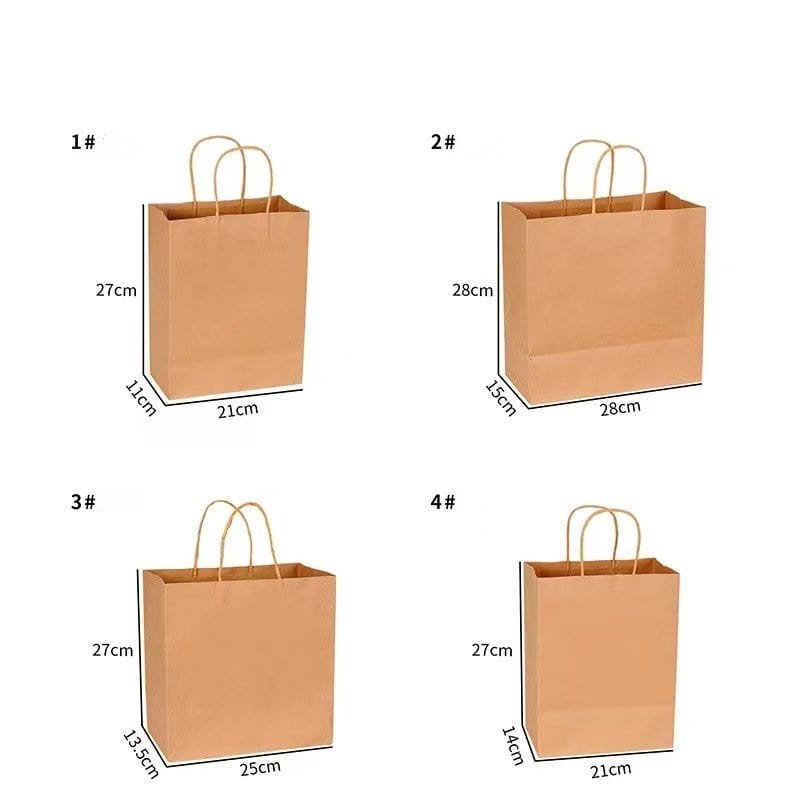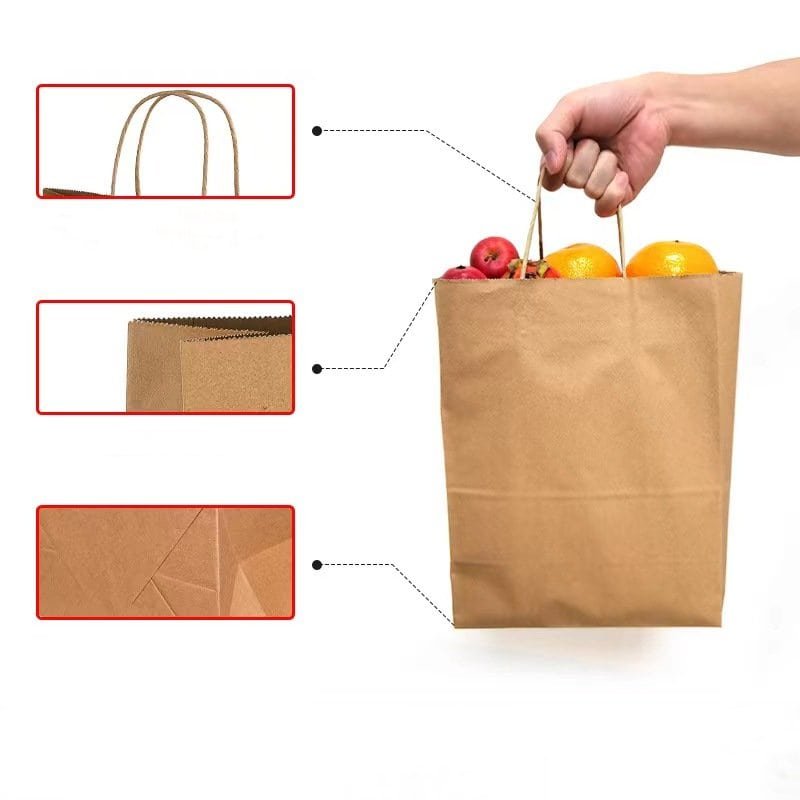Choosing the right type of paper bag for your business is crucial. The right bag not only serves its functional purpose but also enhances your brand image and customer experience. In this guide, I will help you navigate through the key factors to consider when selecting paper bags: size, strength, design, and purpose.
1. Determine the Purpose of the Paper Bag
Before diving into specifics, you need to clearly define the purpose of the paper bag. Ask yourself the following questions:
- What products will the bag hold?
- Is it for retail, food packaging, or promotional purposes?
- Will it be used for heavy items or lightweight goods?
Understanding the purpose will guide you in making decisions regarding size, strength, and design.
2. Selecting the Right Size
The size of the paper bag is paramount. It needs to be suitable for the items it will carry. Here are some guidelines:
- Small bags (6-8 inches wide) are ideal for jewelry, cosmetics, and small gift items.
- Medium bags (8-12 inches wide) are perfect for clothing, books, and takeaway food.
- Large bags (12-20 inches wide) are suitable for larger retail items, bulk food orders, and multiple small items.
Consider the dimensions of your products and choose a size that provides enough space without being overly large.
3. Assess the Strength and Durability
The strength of the paper bag is determined by the thickness and type of paper used. For heavy or bulky items, you need stronger, thicker paper:
- Lightweight paper bags (below 100 gsm) are suitable for lightweight items like clothing or accessories.
- Medium-weight paper bags (100-150 gsm) can handle moderate weights like food containers or small electronics.
- Heavy-duty paper bags (above 150 gsm) are ideal for heavy items such as books, shoes, or groceries.
Reinforced handles and bottom gussets can also add to the bag’s strength and durability.

4. Design and Customization
The design of the paper bag plays a significant role in branding. Custom printed paper bags can serve as mobile advertisements for your business. Consider the following aspects:
- Brand Colors and Logo: Ensure your bag design incorporates your brand colors and prominently displays your logo.
- Printing Quality: High-quality printing techniques ensure vibrant, durable designs. Opt for CMYK printing for full-color designs.
- Finishes: Matte or gloss finishes can enhance the bag’s appearance. Choose according to your brand’s aesthetic.
Custom printing can significantly enhance brand visibility and customer perception.
5. Environmental Considerations
In today’s market, sustainability is a key factor. Choose eco-friendly materials and processes to appeal to environmentally conscious consumers:
- Recycled Paper: Opt for bags made from recycled paper to reduce environmental impact.
- Biodegradable Materials: Ensure the paper and inks used are biodegradable.
- Sustainable Sourcing: Work with suppliers who adhere to sustainable sourcing practices.
Highlighting these eco-friendly features can enhance your brand’s reputation and appeal.
6. Handle Options
The type of handles can affect both functionality and aesthetics. Consider the following handle options:
- Twisted Paper Handles: Durable and suitable for medium to heavy bags.
- Flat Paper Handles: Comfortable to carry and good for heavier items.
- Ribbon Handles: Adds a touch of luxury, ideal for high-end retail or gift bags.
Choose handles that complement the bag’s design and purpose.

7. Cost Considerations
Finally, consider your budget. The cost of paper bags can vary based on the materials, size, printing, and order quantity:
- Bulk Orders: Ordering in bulk can reduce the cost per unit.
- Simple Designs: Less complex designs can be more cost-effective.
- Supplier Discounts: Look for suppliers who offer discounts for large orders or long-term contracts.
Balance cost with quality to ensure you get the best value for your investment.
Related Questions
The Journey of a Paper Bag: From Production to Delivery
Explore the entire process of how a paper bag is made, from sourcing materials to manufacturing, quality control, and logistics, ensuring the delivery of a top-quality product to customers.
Understanding the Cost Factors in Paper Bag Production
Learn about the key elements that affect the cost of paper bag production, from sourcing high-quality materials to manufacturing, quality control, and logistics, and how these factors influence pricing.
How Custom Printed Paper Bags Can Enhance Your Brand Image?
Discover how custom printed paper bags can be a powerful tool for brand promotion, offering unique design opportunities to create a lasting impression on your customers.
Conclusion
Selecting the right paper bag for your business involves careful consideration of size, strength, design, environmental impact, handle options, and cost. By understanding your specific needs and exploring various options, you can choose a paper bag that not only meets functional requirements but also enhances your brand image.
At HMZ Technology, we are committed to providing high-quality, customizable paper bags that cater to your business needs. Contact us today to discuss how we can help you with your paper bag requirements.
